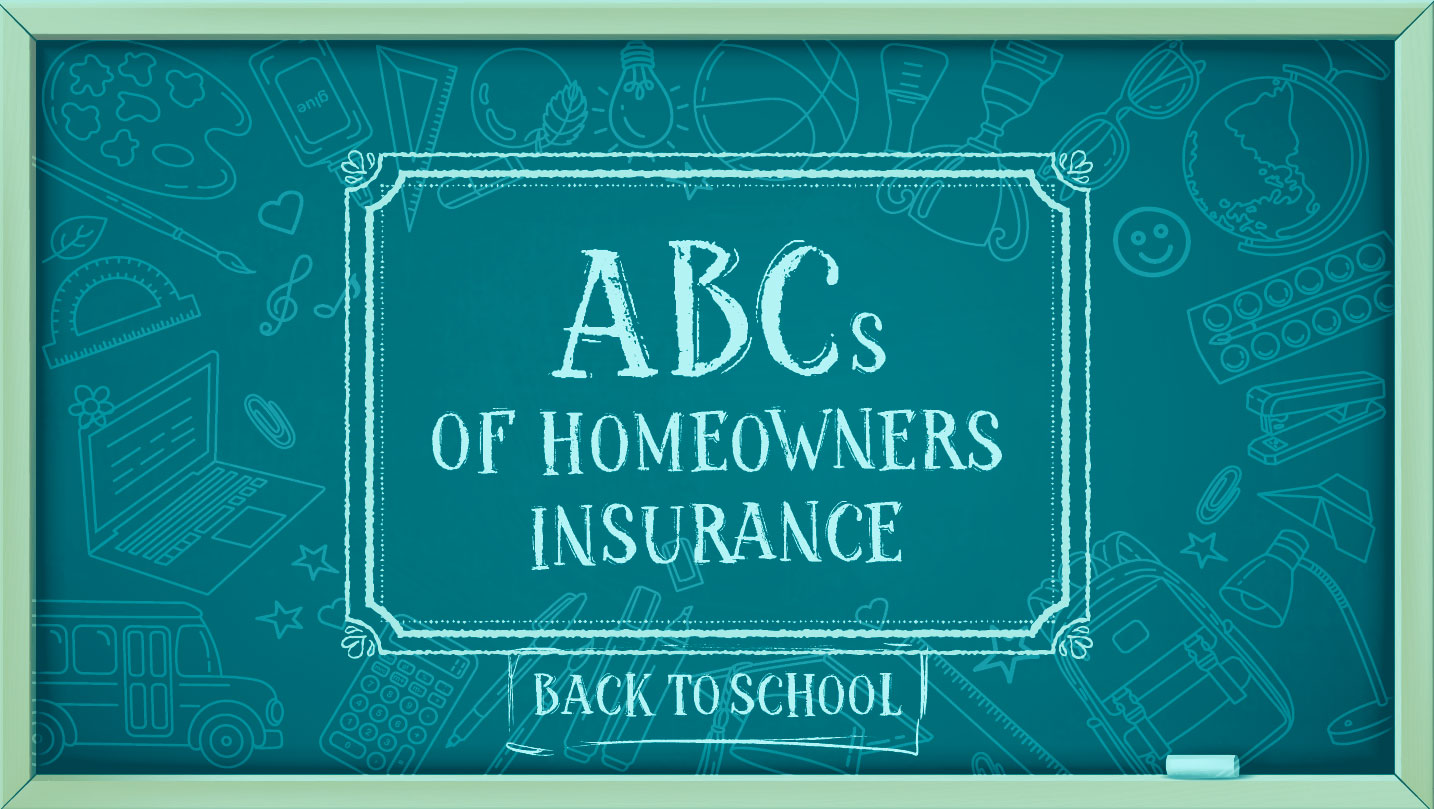As the kids head back to school and we all settle into new routines, it’s a great time to brush up on some fundamentals—especially when it comes to protecting your biggest investment: your home. Whether you’re a new homeowner or just need a refresher, let’s take it back to basics with the ABCs of homeowner’s insurance—starting with the coverage that carries the most weight.
Coverage A – Your Home
Coverage A is the cornerstone of your homeowner’s policy. It protects the physical structure of your home—the walls, roof, flooring, built-in appliances, and everything that makes up the building itself—from covered perils like fire, hurricanes, and vandalism.
But there’s more to Coverage A than just repairs:
- It drives a large portion of your insurance premium. The amount you select for Coverage A directly influences how much you pay for your policy.
- It must be enough to cover the replacement cost* of your home. This is also the amount mortgage companies require you to carry.
- Your hurricane deductible is based on Coverage A. In Florida, this can have a big impact on your out-of-pocket costs after a storm.
- Standard homeowner’s insurance does NOT cover flood. You’ll need a separate flood insurance policy for that protection.
- Most importantly, understanding how Coverage A is calculated can help you avoid being underinsured:
- Replacement Cost vs. Market Value: Know the Difference
*Replacement Cost (Coverage A) is the cost to rebuild your home from the ground up using similar materials and today’s construction prices. It does not include the land or real estate market trends—it’s purely about the cost to reconstruct your house as it stands. - Market Value is what your home would sell for on the open market. It includes the value of the land, location, and market conditions. For example, a home in a popular Tampa neighborhood may have a higher market value due to demand—but that doesn’t change what it would cost to physically rebuild it after a fire or storm.
- Bottom line: Your insurance is based on replacement cost, not market value. Knowing this helps ensure you’re choosing the right amount of coverage—and protecting your finances when the unexpected happens.
- Replacement Cost vs. Market Value: Know the Difference
Optional add-ons for customers:
Water Back-up and Sump Pump Overflow – Provides additional coverage to covered property caused by water backing up through sewers or drains, or overflow from a sump pump.
Screen Enclosures and Aluminum-Framed Carports – Provides additional coverage for damage caused by a hurricane to screened enclosures and aluminum-framed carports permanently attached to the house.
Coverage B – Other Structures
Have a detached garage? Fence? Tool shed? Coverage B steps in to protect these separate structures on your property. While it typically offers a smaller limit than Coverage A, it’s essential for keeping your full property protected.
Coverage C – Personal Belongings
Coverage C covers the things you own inside your home—like your sofa, television, clothing, laptop, and even sports equipment. If your items are stolen or damaged due to a covered event, this portion of your policy helps you replace them. Pro tip: It’s smart to create a home inventory to know what you own and what it’s worth.
Optional add-on for customers:
Personal Property Replacement Cost – Additional coverage for personal property to be settled at replacement cost at the time of loss without deduction for depreciation.
Coverage D – Temporary Living Expenses
If disaster strikes and your home becomes unlivable due to a covered peril (like a fire or major storm), Coverage D helps with additional living expenses—such as hotel stays, meals, and temporary housing—while repairs are underway.
Coverage E – Personal Liability Protection
This coverage protects you if someone else is injured or their property is damaged because of your actions—whether it happens at your home or somewhere else. From a guest slipping on your driveway to an accidental mishap at the park, personal liability coverage can help with legal and medical costs.
Optional add-on for customers:
Animal Liability – Provides additional coverage for bodily injury or property damage caused by an animal owned or kept by the homeowner, for which they are legally liable.
Coverage F – Medical Payments
Different from liability protection, Coverage F offers limited medical coverage for guests who are accidentally injured on your property, regardless of fault. It’s designed to quickly handle smaller claims like minor falls or scrapes without needing to go through a lengthy legal process.
Final Thoughts
Just like school teaches us the ABCs to build our knowledge, understanding the ABCs of your homeowner’s insurance helps you build a strong foundation for protecting your home, family, and finances.
If it’s been a while since you reviewed your policy, now’s a great time to get an “insurance check-up.”
Need help understanding your coverage or want to make sure you’re properly protected? Reach out to your insurance agent—they’re here to help with everything from policy questions to coverage updates.
